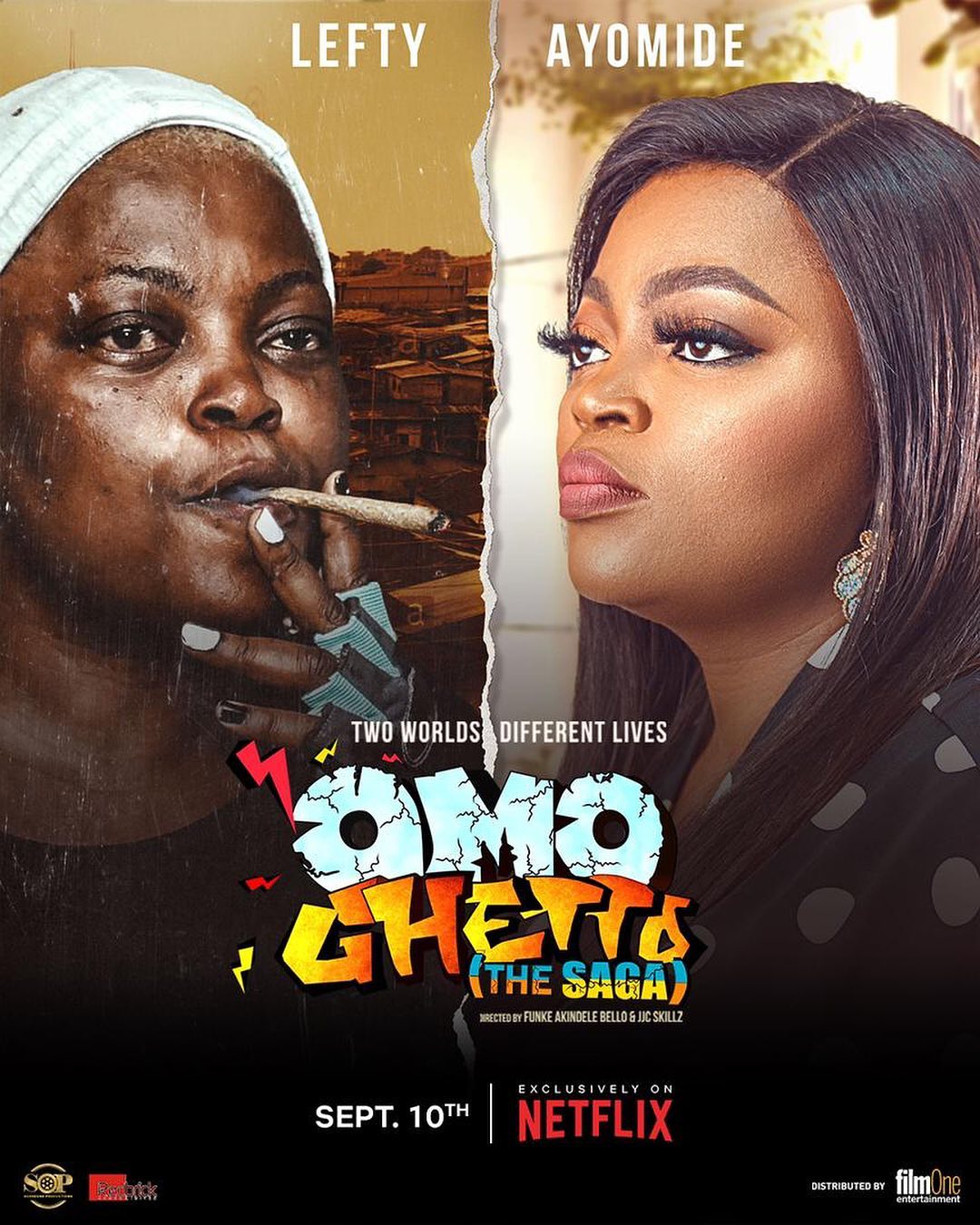Despite the success of films like A Tribe Called Judah, Battle on Buka Street and Omo Ghetto: The Saga (2020), cinemas continue to struggle with attracting and maintaining new audiences at the box office consistently and converting the rising success to all-round industry growth.
By Joseph Jonathan
In recent years, there has been a surge, albeit unstable, in Nigeria’s box office revenue. For context, Nigerian cinemas made over ₦7.2 billion in 2023, an increase from ₦6.8 billion in 2022 and ₦4.9 billion in 2021, according to a report put together by In Nollywood. Out of this number, ten Nollywood films grossed over ₦50 million, with Funke Akindele’s A Tribe Called Judah (2023) being the standout performer. The film became the first ever Nollywood title to gross ₦1 billion at the box office, shattering the record for highest-grossing Nollywood film of all-time, previously held by another Akindele title, Battle on Buka Street (2022).
For dedicated cinephiles and Nollywood lovers, these impressive numbers beg the question of whether cinema-going culture in Nigeria is truly back. While there is no straightforward answer to this, it poses another question of how cinema-going culture was lost in the first place. Nigerian box office yearly revenue and admissions witnessed a steady rise between 2015 and 2019 until the COVID-19 pandemic hit in 2020. Before answering the question of how cinema-going culture was lost, it is best to look at the history of cinemas in Nigeria and how cinema-going culture has fared since its inception.
Nigeria’s Cinema Culture: The Rise and Fall
After Nigeria’s independence in 1960, the film industry experienced unprecedented growth with Nigerians taking over the cinemas built during the colonial era. This period from the 1960s to the late 1980s became known as the “Golden Age” of Nollywood. At this time, there was stiff competition with foreign films and it wasn’t until the late 1960s and into the 1970s that Nigerian film productions gradually gained momentum, spearheaded by former theatre practitioners like Hubert Ogunde, Ola Balogun, Moses Olaiya, Jab Adu, Isola Ogunsola, Ladi Ladebo, Sanya Dosumu and Sadiq Balewa who transitioned to the big screen. These former theatre practitioners were responsible for the first commercial Nigerian films to be shot on celluloid. Their films were primarily in Yoruba language and replete with didactics for an audience primarily based in south western Nigeria.
However, concerns about foreign cultural dominance (by foreign films) prompted the 1972 Indigenisation Decree by General Yakubu Gowon, which transferred ownership of the cinemas to Nigerians. This policy encouraged more Nigerians to play active roles in the booming cinema business by taking up ownership of cinema houses. When the oil boom of 1973 through 1978 came, it further contributed to the growth of cinema-going culture in Nigeria, with more cinema structures set up across the country, such as the Scala Cinema in Sabo, Ibadan. As a result of the economic boom, there was increased purchasing power in Nigeria, which meant that people had more disposable income to spend on cinema-going for their entertainment and relaxation. Despite the efforts of few Nigerian filmmakers at the cinemas, it wasn’t until 1984 that we had our first blockbuster, Papa Ajasco by Wale Adenuga which grossed approximately ₦61,000 (approx. ₦21,552,673 as of 2015). By the following year, Mosebolatan by Moses Olaiya grossed between ₦65,000 and ₦107,000 (approx. ₦44,180,499 as of 2015). Both films were a form of social commentary as most films at that time were, but one thing which played a key role in their success was their comedic nature which the audience were drawn to.

A string of unfortunate incidents such as unstable military dictatorships, currency devaluation, lack of financial support for filmmakers, and the transition of filmmakers to television production led to the decline of cinema-going culture in Nigeria. Many of the existing cinema houses were acquired by religious bodies and turned to churches, like the Jebako Cinema in Idi-Oro; others were simply just closed down. In the early 1990s, only a few of the once vibrant cinema houses like the Pen Cinema in Agege, Lagos, were still in operation, and by 1999, all had collapsed.
A Gradual Return
Cinemas in Nigeria remained moribund until 2004 when the Silverbird Group launched a new chain of cinemas, starting with the Silverbird Galleria in Lagos. At this time, Nollywood at box office was still at its experimental stage, with Irapada, a 2006 film about a young man caught between modernity and tradition in his quest to save his life, becoming the first “new wave” film to be shown at a cinema. Prior to this time, film distribution was restricted to television and CDs. However, in 2009, Kunle Afolayan’s mystery-thriller, The Figurine, was received with critical and commercial success grossing ₦30 million. It seems likely that after the success of The Figurine, more cinema chains sprung up, with the Silverbird Group expanding to other cities, and over the next six years others such as Ozone Cinemas, Genesis Cinemas and Filmhouse Cinemas were established. In 2015, cinemas grossed ₦2.5 billion with 2.4 million admissions across 25 locations. The highest grossing Nollywood film for that year was Fifty with ₦80 million.
2016 was the turning point for Nollywood in cinemas with The Wedding Party which grossed ₦452,288,605 from 401,668 admissions. By the end of that year, the cinemas had a total gross of ₦3.2 billion from 3.2 million admissions. These figures would rise steadily until the COVID-19 pandemic hit in 2020. Just like every other film industry, Nigeria suffered a loss with the cinemas making ₦2.1 billion from 1.7 million admissions. This was a huge decline from the previous year 2019 when the total box office was ₦6.4 billion from 5.1 million admissions. Still reeling from the effects of the pandemic, the total box office for 2021 was ₦4.9 billion from 3.4 million admissions. By this time (2021), the number of cinemas in the country had increased significantly that there were 68 cinemas in Nigeria according to data by Statista.

For majority of Nollywood’s most successful box office titles, there is a shared recipe for success. For one, they all belonged to the comedy genre but with slight variations as action comedy or dramedy. It would seem that “New Nollywood” has borrowed a leaf from the success of Mosebolatan and Papa Ajasco from the 1980s. There is also the fact that most of these films were holiday releases, mostly in December when audiences are more likely to spend money to have a good time.
Is Cinema-Going Culture Truly Back?
Unlike the 1980s when there were a handful of commercially successful Nigerian films in the cinemas, Nollywood films have enjoyed relative commercial success in recent years. From 2010 to 2023, seven films have broken the record for highest grossing Nollywood film of all-time, the most recent being A Tribe Called Judah (2023). However, does the recent box office success of Nollywood films paint the whole picture of our cinema culture being well and truly back?
Despite the success of Nollywood films like A Tribe Called Judah, Battle on Buka Street and Omo Ghetto: The Saga (2020), cinemas continue to struggle with attracting and maintaining new audiences to the box office consistently and converting the rising success to all-round industry growth. For one, Nollywood titles in cinemas still pale in comparison to Hollywood titles. For instance, in 2018, Chief Daddy was the highest grossing Nollywood film (₦387,540,749) with 340,390 admissions while Black Panther was the highest grossing Hollywood film (₦818,117,133) with 588,815 admissions in Nigeria. Interestingly, between 2018 and 2023, it was only twice (2020 & 2023) that a Nollywood film had higher box office and admission figures than a Hollywood film. This goes to show a higher demand for Hollywood titles amongst audiences.


The recent revenue growth (box office success) has been mostly due to increased ticket prices and there isn’t corresponding growth in admission figures. According to the same industry report by In Nollywood, Nigerian cinemas witnessed a year-on-year increase in revenue and admissions with tickets priced between ₦500 – ₦1000. However, the pandemic ushered in a new era for the cinemas as tickets were priced at an average of ₦3,700. As of 2023, the average ticket price in most cities was ₦7,000.
Due to the recent economic struggles of Nigeria and subsequent hike in ticket prices, audiences are rethinking their options, especially in a time when streaming platforms have gained traction since the pandemic. The average cost of a cinema ticket in 2023 was enough for a Netflix and Showmax subscription. For the audiences, it is almost certain that these cinema films would show up on these streaming platforms, so why not wait?
While cinemas continue to struggle with admission figures, Netflix and Showmax keep strengthening their hold on the market. For instance, in 2023 when Nigeria’s total cinema admissions was pegged at 2.6 million, Netflix released H1 viewership data to show that Shanty Town was the most watched Nollywood title with 27.3 million views. Tech Cabal reports that Showmax on the other hand, has experienced a 26% year-on-year growth over the last four years.
There is also another argument that there are not enough cinemas to fuel the growth of cinema-going culture in Nigeria. As at 2021, only 10 states had more than one cinema and of this number, Lagos state alone has 26. Most cinemas are located far from residential areas, leading to increased transport costs for audiences. For instance, during the cinema run of A Tribe Called Judah, I found out that it would cost me ₦15,000 to see the film, with half of that amount being for transportation only. Consequently, this lack of accessibility deters potential moviegoers, especially those from low-income households, who may find it financially burdensome to travel long distances to reach cinemas.
While Nigeria’s box office revenue has witnessed growth in recent years, audience behaviours towards cinema releases haven’t been particularly encouraging as evidenced by the fluctuating admission numbers and competition from streaming platforms. The problem with Nigeria’s cinema-going culture is multi-faceted; there is the Nigerian economy which is already at its knees, hiked ticket prices, lack of easy access to cinemas, uninspiring screenplay from Nollywood titles and the increased convenience that streaming platforms offer. Perhaps if these issues are addressed, only then can we say that cinema-going culture is truly back.
Joseph Jonathan is a historian who seeks to understand how film shapes our cultural identity as a people. He believes that history is more about the future than the past. When he’s not writing about film, you can catch him listening to music or discussing politics. He tweets @JosieJp3.




